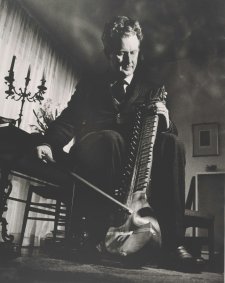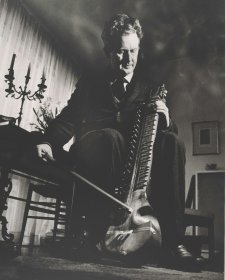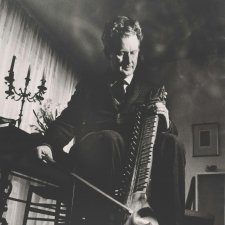Ron Grainer (1922–1981) was a composer of music for television and film. Born in Atherton, Queensland, Grainer is said to have been as young as four when he started learning the violin and six when he gave his first public performance. Having briefly studied piano at the University of Queensland, he enlisted in the RAAF in 1940, serving as a wireless operator in Townsville and performing in concerts as a member of the service’s entertainment unit. Discharged from the Air Force on medical grounds in 1945, Grainer studied under Eugene Goossens at Sydney’s Conservatorium of Music before moving to London in the early sixties and becoming a rehearsal pianist for the BBC. He gained attention for his theme for the Maigret series, and in 1962 wrote the music from which the theme to Steptoe and Son was taken. The following year he was asked to provide the opening music for a new children’s science fiction series entitled Doctor Who. Grainer’s theme, considered a pioneering piece of electronic music and later reinterpreted by bands including Pink Floyd, Thin Lizzy and The Pogues, is still in use 50 years later as the BBC embarks on production of the 2014 incarnation of the series. Amongst connoisseurs of television themes Grainer is equally renowned for the atmospheric music for the opening and closing credits of The Prisoner series, starring Patrick McGoohan. His film credits include the scores for To Sir With Love (1967) and the Charlton Heston cult classic The Omega Man (1971).
Collection: National Portrait Gallery
Gift of the artist 2002
Donated through the Australian Government's Cultural Gifts Program
© Lewis Morley Archive LLC
Lewis Morley (49 portraits)



On one level The Companion talks about the most famous and frontline Australians, but on another it tells us about ourselves.



Magda Keaney speaks with Lewis Morley about his photographic career and the major retrospective of his work on display at the NPG.



It is not well known that the person who composed the famous theme music for the BBC's Doctor Who series was Australian Ron Grainer.